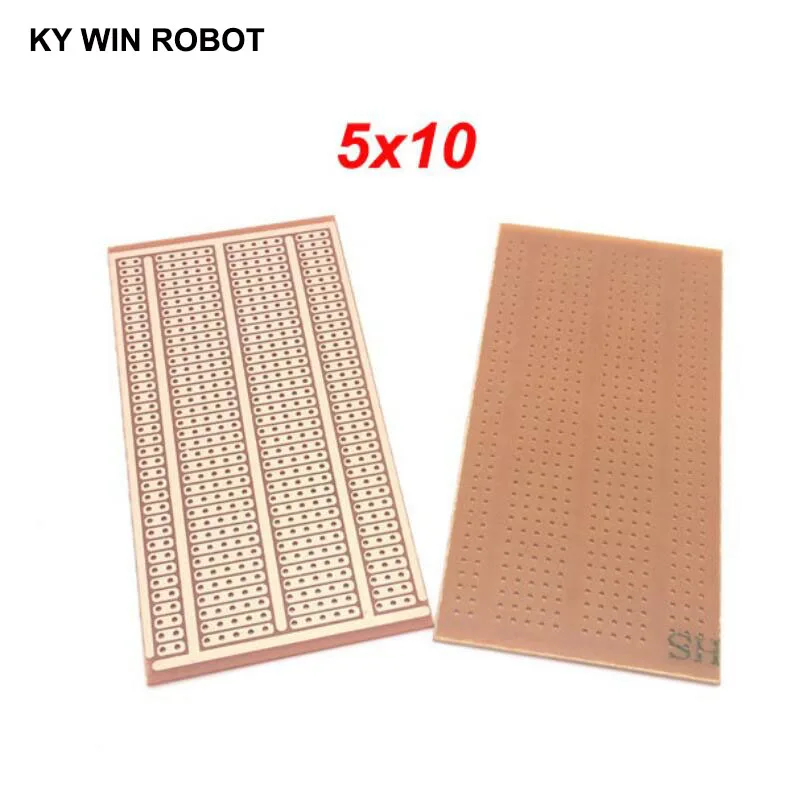I’ve been slowly working my way through an old pile of stripboards and I’m thinking I’ll stock up.
But everywhere I look vendors sell by physical dimensions in cm (or in that old imperial system we Scots invented and gave to the colonies before we and the world went metric)
What I cannot judge is how many strip rows to how many columns.
So, my DAQ* is are the strip rows always running on the longest edge? The first listed measurements? Hidden in some code?
If I need a big stripboard with say 50 strip rows and 60 holes per strip what do I ask or search for?
Any and all input appreciated. Best to all.
(*Dumb.Ass.Question)
Well, the hole spacing is 0.1 Scottish inch, so 50 holes by 60 holes is 5 by 6 inches (17 hectares). As for which direction the strips run? If you have to guess, guess they’re parallel to the long edge, but no promises from me.
Aye and there’s the rub. How do you tell which way the rows go?
I just checked Tayda, and the first two there had the rows in different directions, so pretty sure the answer is “by looking at them” 
Ah the empirical scientific method! Sorted!
Now if we could just get vendors to stop using the same image for every size they stock!
You could just make it your policy only to buy square stripboards.
Knowing my luck I’ll order a square and the rows will be diagonal!
There are alternatives that can be very handy like this one:
or bigger ones:
I’ve been using this for a while and find it very convenient to use because of the many long copper lanes suitable for GND and Vcc and Vdd etc.:
Obviously you cut them to the size needed.
Let’s put it this way-if any of us had ever seen them running the short way we’d probably pipe up. I will say that I have seen perma-proto boards (the ones that have roughly the same layout as a breadboard) called “strip board” on occasion.

Okay maybe I should have been piping up because Well duh… I even have some of those. I tried to build the 3340 oscillator on it.
Ooh! Is it wrong I think that’s too square? 
I like the 5x10. May get some like that for my lunetta case. Perfect for cmos. Thanks
These are my goto from tayda. usually big enough. made 3 3340 OSC on em, adequate space for those.
Everybody should stock a few different sizes and shapes of stripboard/veroboard. It’s amazingly easy to use. And yes, if you set up a circuit on a breadboard it makes sense to use a stripboard design that reflects the design of the breadboard. Translating between different layouts is a major source of error.
Or, design your own and have them manufactured:
Might actually even be cheaper in some cases.
And I know it looks like protoboard, but I assure you there are strips.
I have considered this. They look lovely. and are likely less janky. Curious how cutting strips fairs with this method however.
Janky? Don’t know the word.
Do you mean the fact projects look meh on stripboard?
I was pleasantly surprised when sam started spray painting his stripboard.

I use a lot of stripboard so no hate for it, but it can be a bit unreliable.
It’s surprisingly easy. There are only strips on the bottom side, but the the holes have proper eyelets. If you scrape/drill out the eyelet on the bottom, it cuts the connection. You have to be a little more careful with connections far apart, though, since you could accidentally make connections on the component side as well.



